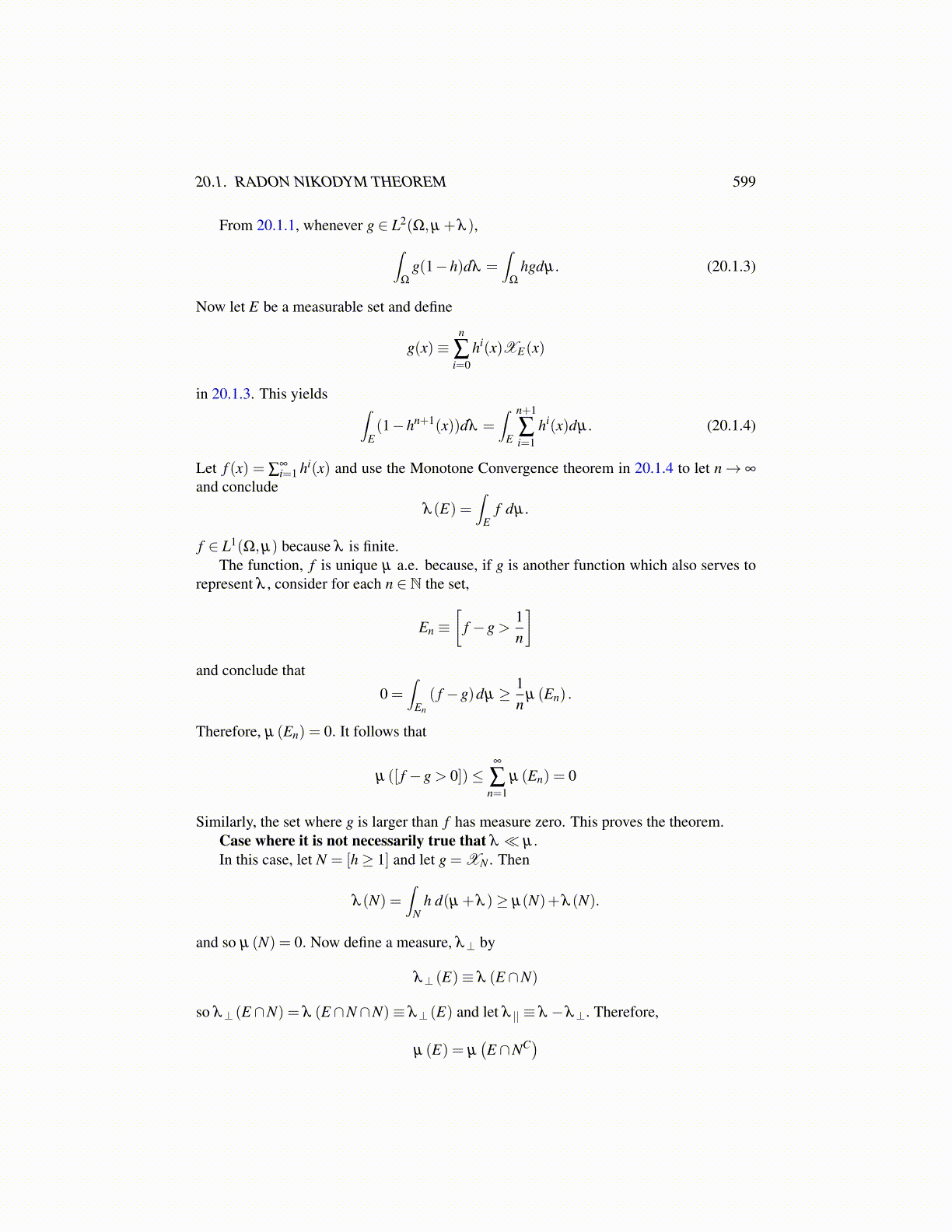
20.1. RADON NIKODYM THEOREM 599
From 20.1.1, whenever g ∈ L2(Ω,µ +λ ),∫Ω
g(1−h)dλ =∫
Ω
hgdµ . (20.1.3)
Now let E be a measurable set and define
g(x)≡n
∑i=0
hi(x)XE(x)
in 20.1.3. This yields ∫E(1−hn+1(x))dλ =
∫E
n+1
∑i=1
hi(x)dµ . (20.1.4)
Let f (x) = ∑∞i=1 hi(x) and use the Monotone Convergence theorem in 20.1.4 to let n→ ∞
and concludeλ (E) =
∫E
f dµ .
f ∈ L1(Ω,µ) because λ is finite.The function, f is unique µ a.e. because, if g is another function which also serves to
represent λ , consider for each n ∈ N the set,
En ≡[
f −g >1n
]and conclude that
0 =∫
En
( f −g)dµ ≥ 1n
µ (En) .
Therefore, µ (En) = 0. It follows that
µ ([ f −g > 0])≤∞
∑n=1
µ (En) = 0
Similarly, the set where g is larger than f has measure zero. This proves the theorem.Case where it is not necessarily true that λ ≪ µ.In this case, let N = [h≥ 1] and let g = XN . Then
λ (N) =∫
Nh d(µ +λ )≥ µ(N)+λ (N).
and so µ (N) = 0. Now define a measure, λ⊥ by
λ⊥ (E)≡ λ (E ∩N)
so λ⊥ (E ∩N) = λ (E ∩N∩N)≡ λ⊥ (E) and let λ || ≡ λ −λ⊥. Therefore,
µ (E) = µ(E ∩NC)